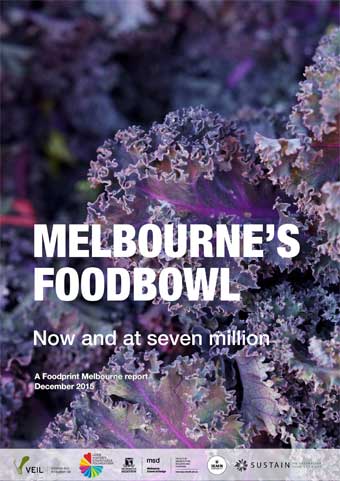Report: Melbourne's Foodbowl
Melbourne’s Foodbowl can currently provide enough food to meet 41% of the city’s food needs, but urban sprawl is putting this city-fringe farmland at risk.
The first release from the Foodprint Melbourne project investigated the importance of city-fringe farmland, and highlighted the potential threat to supplies of fresh, locally grown fruit and vegetables as Melbourne grows to a population of over 7 million people by 2050.
Feeding Melbourne from its Foodbowl
The Foodprint Melbourne project investigated how much of Greater Melbourne’s food can be supplied by the city’s Foodbowl. The project found that in 2015, Melbourne’s city-fringe farmland grew enough food to meet 41% of the Greater Melbourne population’s overall food needs, and that these peri-urban farms make a significant contribution to meeting our vegetable needs, can meet all of our egg and chicken meat needs, produce enough red meat to meet the majority of our needs, and produce significant amounts of dairy and fruit.
If we want to eat local fruit and vegetables in 2050, how can we plan to make it happen?
Urban Sprawl Threatening Farmland
As Melbourne grows to 7 million people, we will need 60% more food to feed the population. But at the same time, we will lose farmland due to urban sprawl. If Melbourne continues to grow the way it has in the past, by the time we reach a population of 7 million people, Melbourne’s Foodbowl will have lost a significant amount of farmland.
We may only be able to meet around 18% of our overall food needs, and will go from meeting 82% of our vegetable needs to only 21%. We may only be able to meet 3% of our fruit needs.
The data doesn’t tell us exactly how much of the food currently grown in Melbourne Foodbowl is actually consumed in Greater Melbourne due to lack of data about how food is transported around the state and to and from other states, but it shows how important this area is as a food-growing region.
Sign up for the Foodprint Melbourne newsletter for project updates
